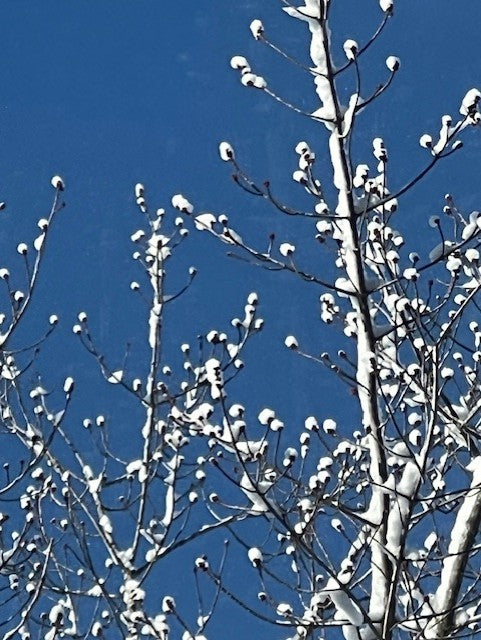
Vermont Isn’t Just for Skiing. The Ecological Impact of Sugaring Season
By Zoe Papageorgiou
When it comes to maple syrup, one state stands out as a true champion: Vermont. Renowned for its rich flavor and high-quality production, Vermont has earned its place in the hearts (and taste buds) of syrup lovers everywhere. But what makes this picturesque New England state the ultimate destination for maple syrup? To start, let’s talk about climate.
Vermont's unique climate plays a crucial role in producing top-notch maple syrup. The combination of cold winters and warm spring days creates perfect conditions for sap flow. During late winter and early spring, temperatures fluctuate between freezing nights and warmer days — these temperature swings cause pressure changes within sugar maple trees that allow sap to flow freely. With an average annual snowfall between 60 and 100 inches (making Vermont one of the snowiest states), trees are well-hydrated when tapping season arrives. This ideal weather pattern sets Vermont apart from other regions where inconsistent climates can impact sap quality.
The state of Vermont hosts an abundance of sugar maple trees. Home to over 3 million acres of forest land filled with majestic sugar maples (Acer saccharum), Vermont boasts one of the largest concentrations of these prized trees in North America. These towering beauties thrive throughout the Green Mountain State, providing an abundant source of sap each year. The sheer number of healthy sugar maples ensures that producers have access to the high-quality raw materials necessary for crafting delicious syrup — a key factor contributing to Vermont's reputation as a leading producer.
Vermont has a long-standing tradition of maple sugaring that dates back centuries. What’s unique is that while many producers still maintain traditional syrup production methods, others are embracing modern advanced tubing systems and boiling techniques while preserving high quality. Vermont’s blend of time-honored methods and innovative approaches keeps it at the forefront of syrup production.
Vermonters take immense pride in their craft, which translates into exceptional products on store shelves worldwide. Strict regulations govern how maple syrup is produced here — from ensuring purity standards are met through rigorous testing protocols — to promoting sustainable harvesting practices aimed at protecting tree and forest health. Vermont’s commitment to quality can be seen through the accolades received not only for their superior flavor but also for being crafted with care, respect, and attention to detail — all hallmarks associated with artisanal craftsmanship!
Maple sugaring isn’t just about making syrup; it’s also deeply woven into local culture! Throughout March and April each year, many towns across Vermont celebrate Sugaring Season with festivals featuring syrup tastings, pancake breakfasts, sugar-on-snow events — and even tours showcasing working sugarhouses. These community gatherings foster connections among residents while offering visitors an authentic experience celebrating all things maple.
From favorable climate conditions and abundant sugar maples to deep-rooted traditions coupled with innovation, Vermont truly shines as the best place for making maple syrup. So, next time you pour some pure Vermont maple syrup onto your breakfast plate, remember — the magic begins right here in the heart of the Green Mountains!
